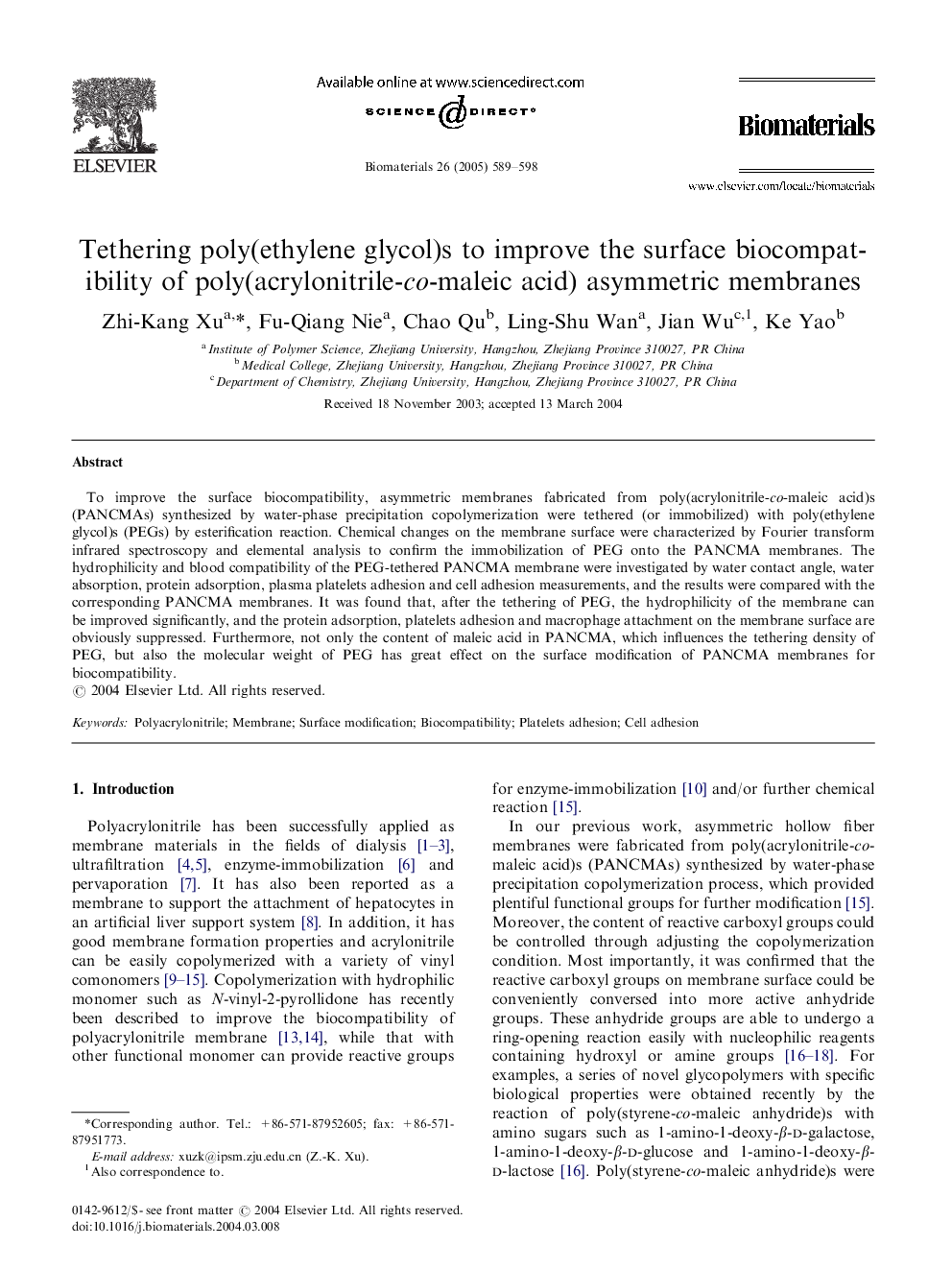| Article ID | Journal | Published Year | Pages | File Type |
|---|---|---|---|---|
| 10230325 | Biomaterials | 2005 | 10 Pages |
Abstract
To improve the surface biocompatibility, asymmetric membranes fabricated from poly(acrylonitrile-co-maleic acid)s (PANCMAs) synthesized by water-phase precipitation copolymerization were tethered (or immobilized) with poly(ethylene glycol)s (PEGs) by esterification reaction. Chemical changes on the membrane surface were characterized by Fourier transform infrared spectroscopy and elemental analysis to confirm the immobilization of PEG onto the PANCMA membranes. The hydrophilicity and blood compatibility of the PEG-tethered PANCMA membrane were investigated by water contact angle, water absorption, protein adsorption, plasma platelets adhesion and cell adhesion measurements, and the results were compared with the corresponding PANCMA membranes. It was found that, after the tethering of PEG, the hydrophilicity of the membrane can be improved significantly, and the protein adsorption, platelets adhesion and macrophage attachment on the membrane surface are obviously suppressed. Furthermore, not only the content of maleic acid in PANCMA, which influences the tethering density of PEG, but also the molecular weight of PEG has great effect on the surface modification of PANCMA membranes for biocompatibility.
Keywords
Related Topics
Physical Sciences and Engineering
Chemical Engineering
Bioengineering
Authors
Zhi-Kang Xu, Fu-Qiang Nie, Chao Qu, Ling-Shu Wan, Jian Wu, Ke Yao,
